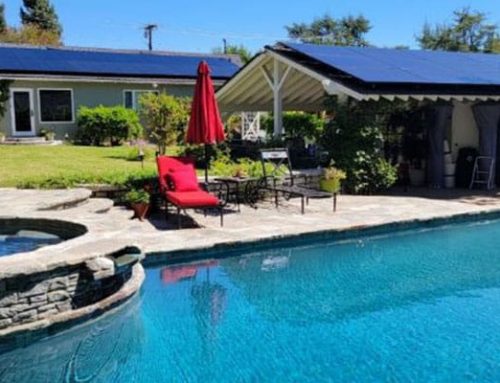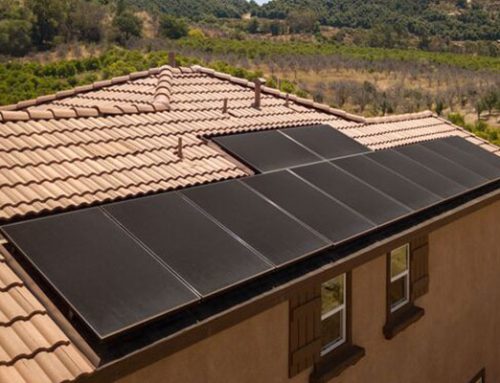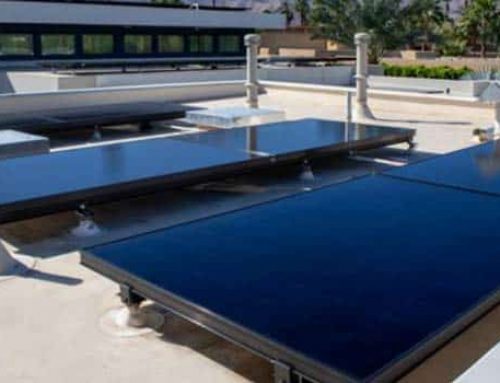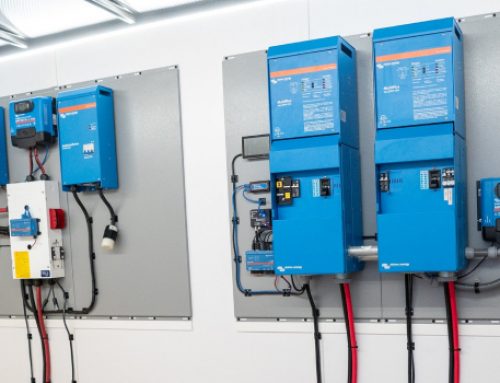In a world striving for sustainability, the allure of off-grid systems is growing stronger by the day.
But how does one navigate the journey from a conventional power grid to a self-sufficient setup?
We’ll guide you through the essential steps and considerations for building an off-grid solar system. From understanding the renewable energy potential of South Australia to selecting the right components and obtaining permits, we cover all the bases. We offer practical tips to ensure your transition to renewable energy is as smooth and efficient as possible.
Our focus isn’t just on the technicalities; we aim to highlight the growing interest in renewable energy and how it benefits both the environment and your wallet.
By the end of this article, you’ll have a comprehensive understanding of what it takes to set up an off-grid system in Adelaide, including the benefits and challenges you might encounter along the way.
In this guide, we’ll cover:
- Overview of Off-Grid Systems
- South Australian Regulations That You Need to Know Of
- Matching Solar Systems With Home Requirements
- Component Considerations
- Step By Step Guide
- Budget Considerations
Join us on this enlightening journey towards a greener, more sustainable future.
ENERGY BUSTER TIPS:
|
The Overview of Off-Grid Systems
They offer a pathway to harness this natural resource, transforming sunlight into a reliable and sustainable energy source for your home or business.
What is an Off-Grid System?
This is a self-contained power solution that operates independently of the traditional electricity grid. It typically includes solar panels, battery storage, a charge controller, and an inverter.
The panels capture sunlight and convert it into electricity, which is then stored in batteries for use at any time.
The charge controller ensures the batteries charge efficiently and protects them from overcharging, while the inverter converts the stored DC power into AC power, suitable for everyday use in homes and businesses.
Benefits of Going Off-Grid in Adelaide
- Energy Independence: One of the most significant benefits is energy independence. You are not reliant on the main power grid, thus reducing your vulnerability to power outages and energy price hikes.
- Environmental Impact: Renewable power is a clean, renewable energy source. By adopting an off-grid system, you significantly reduce your carbon footprint, contributing to a healthier environment.
- Long-Term Savings: Although the initial setup cost can be significant, these systems can lead to substantial savings in the long run. With the abundant sunshine in Adelaide, your system can generate ample power, reducing or even eliminating your electricity bills.
- Remote Area Access: For properties in remote areas of South Australia, where connecting to the grid can be costly or impossible, these systems offer a practical and efficient solution to meet energy needs.
- Technological Advancements: The continuous advancements in technology mean more efficient, durable, and cost-effective systems are available, making it an ever-more attractive option for Adelaide residents.
By understanding the workings and benefits of off-grid systems, you can make an informed decision about whether this renewable energy source aligns with your energy needs and environmental values.
Australian Regulations for Off-Grid Systems
Australia’s move towards renewable energy is accompanied by a set of regulations designed to ensure safety, efficiency, and environmental responsibility.
Understanding these regulations is crucial for anyone in Adelaide looking to switch to an off-grid system.
Regulatory Landscape in South Australia
South Australia has established a comprehensive regulatory framework to govern the installation and operation of renewable energy systems. This includes national standards and state-specific requirements.
In South Australia, these regulations are enforced to ensure that solar installations are safe, reliable, and environmentally sound.
Environmental Considerations and Impact
- Site Assessment: Before installing an off-grid system, a thorough site assessment is necessary. This assessment considers the environmental impact, ensuring that the installation does not negatively affect local ecosystems or wildlife.
- Responsible Disposal: Australian regulations also require responsible disposal or recycling of the components, like batteries and panels, at the end of their lifecycle, to minimise environmental harm.
Permits and Inspections
- Council Permits: Depending on your location in Adelaide, you may need to obtain a council permit before installing an off-grid system. These permits ensure that your installation complies with local planning and building codes.
- Electrical Safety Inspections: After installation, your system must undergo an electrical safety inspection. This is a critical step, as it ensures that your system is installed correctly and operates safely.
- Certified Installers: It’s mandatory to have your off-grid system installed by a certified professional. This requirement is in place to ensure that the installation adheres to Australian Standards for renewable energy systems.
- Feed-in Tariffs and Excess Energy: While off-grid systems are independent of the power grid, any surplus energy generated can sometimes be fed back into the grid for a feed-in tariff. However, this is subject to specific regulations and agreements with your local electricity provider.
By staying informed about these regulations and environmental considerations, you can ensure that your transition to an off-grid system in Adelaide is not only smooth but also compliant with Australian standards.
Matching Solar Systems with Home Requirements
It’s essential to tailor the system to your specific home or property needs, ensuring it meets your energy requirements efficiently and effectively.
Understanding Your Energy Needs
- Energy Consumption Audit: Begin by conducting an energy consumption audit of your home. This involves assessing your daily energy usage, which helps in determining the size and capacity of the solar system needed.
- Peak Energy Usage: Identify times of peak energy usage in your household. This will influence the battery storage capacity required to ensure a continuous power supply, especially during nighttime or cloudy days.
- Future Energy Needs: Consider future changes, like family expansion or purchasing energy-intensive appliances, which could increase your energy needs.
Choosing the Right Components
- Solar Panels: The type and number of panels you need depend on your energy consumption and the available space for installation. Panels with higher efficiency may be more expensive but can be beneficial for properties with limited space.
- Battery Storage: Battery capacity is crucial for maintaining power supply when the sun isn’t shining. The size of the battery bank should be aligned with your energy usage patterns and peak load requirements.
- Inverters and Controllers: Selecting the right inverter and charge controller is key for efficient energy conversion and battery management.
What Are the Best Inverters for an Off-Grid System?
Site-Specific Considerations
- Roof Orientation and Angle: The orientation and angle of your roof affect the efficiency of the panels. North-facing panels are generally ideal in the Southern Hemisphere.
- Shading and Environmental Factors: Consider potential shading from trees or nearby buildings, as this can significantly impact the efficiency.
Tools and Resources
- Renewable Energy Potential Tools: Use online tools to estimate the renewable energy potential of your property based on location, roof orientation, and local climate data.
- Professional Consultation: Engage with experts who can provide tailored advice and system design based on your specific needs.
- Cost-Benefit Analysis Tools: Utilize cost-benefit analysis tools to understand the long-term financial implications of your investment.
By carefully considering your home’s energy needs and requirements, you can design an off-grid system that not only meets your energy demands but also optimises efficiency and cost-effectiveness.
Component Considerations: Building a Quality Off-Grid System
Choosing the right components is crucial when building an off-grid solar system in Adelaide. Understanding each component’s role and selecting the best available options ensures your system is efficient, reliable, and long-lasting.
Key Components
- Solar Panels: In Adelaide, panels designed for high sun exposure and durability are recommended. Monocrystalline panels, known for their efficiency and longevity, are a popular choice.
- Battery Storage: Batteries store the energy generated by your panels. Lithium-ion batteries are recommended due to their longer lifespan and better performance in a range of temperatures. Look for brands with proven track records in safety and reliability.
- Inverter: This converts DC electricity from your panels and batteries into AC electricity for home use. Pure sine wave inverters are ideal for running sensitive electronic appliances safely.
- Charge Controller: A charge controller manages the flow of electricity to and from the battery bank, protecting it from overcharging and deep discharge. MPPT (Maximum Power Point Tracking) controllers are efficient in various sunlight conditions.
- Backup Generator (Optional): For additional reliability, a backup generator can be included, especially useful during extended periods of low sunlight.
Recommendations for Brands and Types
While brand preferences can vary, it’s essential to choose components from reputable manufacturers known for quality and after-sales support. Brands like Alpha-ESS, Tesla (for batteries), and Fronius (for inverters) have a solid reputation in the Australian market.
Sourcing Quality Components Locally
- Local Retailers: Visit local retailers in Adelaide who can offer advice tailored to local conditions and provide after-sales service.
- Trade Shows and Expos: Attend renewable energy expos in Adelaide to see the latest technologies and speak directly with suppliers and experts.
- Online Reviews and Forums: Check online reviews and participate in forums to get insights from other owners in Adelaide.
- Certification and Warranties: Ensure all components come with Australian certifications and robust warranties. This not only guarantees quality but also ensures compliance with Australian standards.
- Consult with Local Installers: Experienced local installers can provide valuable recommendations based on their firsthand experience with different brands and types of components.
By selecting the right components and sourcing them from reliable suppliers, you can build an off-grid solar system in Adelaide that not only meets your energy needs but also stands the test of time.
Step-by-Step Guide to Installing Off-Grid System in Adelaide
Embarking on the installation of an off-grid system in Adelaide requires careful planning and adherence to safety protocols.
Here’s a step-by-step guide that illuminates the path to independence, while emphasizing when to seek professional assistance.
Step 1: Site Assessment and Planning
- Assess the Location: Evaluate your property to determine the most suitable location for panels, considering factors like sunlight exposure and roof strength.
- System Design: Based on your energy needs, design the system layout, including the number of panels, battery storage capacity, and placement of the inverter and charge controller.
Step 2: Acquiring Components
- Purchase Quality Components: Source high-quality panels, batteries, inverters, and charge controllers from reputable suppliers, ensuring they meet Australian standards.
Step 3: Installation
- Safety First: Ensure you have the necessary safety equipment like harnesses and helmets if installed on a roof.
- Mounting Panels: Securely mount the panels on the roof or designated area. This step requires precision and understanding of structural integrity.
ENERGY BUSTER TIP: The installation involves working at heights and dealing with electrical components. If you’re not experienced in this, it’s time to call a professional installer.
Step 4: Setting Up Battery Storage
- Location: Install the battery bank in a well-ventilated, cool, and dry area to ensure longevity and safety.
- Connections: Connect the batteries to the charge controller and inverter, adhering to electrical safety standards.
ENERGY BUSTER TIP: Incorrect handling of batteries can be hazardous. If unsure, seek professional help.
Step 5: Inverter and Charge Controller Installation
- Strategic Positioning: Install the inverter and charge controller close to the battery bank but in a location that’s easily accessible for monitoring and maintenance.
- Wiring: Connect the inverter and charge controller to the battery bank and panels, ensuring all wiring is done correctly and safely.
Step 6: Final Inspection and Testing
- System Check: Thoroughly inspect the system to ensure all connections are secure and components are properly installed.
- Test Run: Switch on the system to test its functionality. Monitor the system for a few days to ensure it operates smoothly.
Step 7: Safety and Compliance Check
- Electrical Safety Inspection: Have a licensed electrician or professional installer conduct a safety inspection to ensure compliance with Australian standards.
- Council Approval: Ensure your installation is approved by local council authorities in Adelaide.
Safety Precautions and Best Practices
- Always follow the manufacturer’s installation guidelines.
- Use proper safety equipment and practices, especially when working at heights or with electrical components.
- Never attempt to work on electrical components if you’re not qualified – this is when you should call a professional.
By following these steps, and knowing when to seek professional help, you can safely install an off-grid system. However, remember that safety and compliance should always be your top priorities.
Budgeting for Your Off-Grid System in Adelaide
Investing in an off-grid system in Adelaide is not just an environmental choice, but a financial commitment as well.
Understanding the costs involved and exploring available financial incentives can make this transition more affordable and beneficial in the long term.
Cost Breakdown
| Component | Estimated Cost Range (AUD) |
| Solar Panels | $5,000 – $12,000 |
| Battery Storage | $6,000 – $15,000 |
| Inverter | $1,000 – $3,000 |
| Charge Controller | $500 – $2,000 |
| Installation | $1,500 – $5,000 |
| Miscellaneous | $500 – $2,000 |
| Total | $14,500 – $39,000 |
Note: These figures are estimates and can vary based on system size, component quality, and specific requirements.
Financial Incentives and Support
Australia offers several financial incentives that can help offset the costs of installing an off-grid system:
- Renewable Energy Certificates (RECs): RECs are available under the Small-scale Renewable Energy Scheme (SRES). They can be sold or traded, providing financial compensation for your investment in renewable energy.
- State-specific Incentives: Some states offer additional grants or subsidies. Click here for information on incentives specific to South Australia.
- Feed-in Tariffs: If you choose to connect your system to the grid and feed excess energy back, you may be eligible for feed-in tariffs.
Budgeting and Cost-Saving Tips
- Detailed Planning: Accurately assess your energy needs to avoid overspending on an unnecessarily large system.
- Compare Quotes: Get multiple quotes from different suppliers and installers to ensure competitive pricing.
- Quality vs. Cost: Invest in quality components that offer longer lifespans and better warranties, which can save money in the long run.
- DIY Components: Consider undertaking some installation aspects yourself if you have the skills, but always consult a professional for critical components like electrical connections.
- Phased Installation: If budget constraints exist, consider a phased installation approach, starting with a smaller system and expanding as funds allow.
- Financing Options: Explore financing options, which can provide a manageable way to fund your off-grid system.
By understanding the financial aspects and leveraging available incentives, you can make a more informed decision about installing an off-grid system in Adelaide, ensuring it’s not only sustainable for the environment but also for your wallet.
Key Takeaways for Adelaide’s Off-Grid Journey
As we wrap up our comprehensive guide to building an off-grid solar system in Adelaide, let’s revisit the essential highlights that pave the way towards a sustainable and energy-independent future.
Embracing the Sun’s Power
- Harnessing Local Solar Potential: Adelaide’s sunny climate makes it an ideal location for off-grid systems.
- Tailored Solutions: Customising the system to meet individual home and energy needs ensures efficiency and cost-effectiveness.
Regulatory and Environmental Considerations
- Compliance with Regulations: Adhering to Australian standards and local Adelaide regulations is crucial for a safe and legal installation.
- Environmental Responsibility: Off-grid systems contribute positively to the environment by reducing carbon footprint and promoting sustainability.
System Components and Installation
- Quality Components: Selecting high-quality panels, batteries, inverters, and charge controllers is fundamental for system longevity and reliability.
- Professional Installation: While DIY aspects are possible, professional installation is recommended, especially for electrical components, to ensure safety and compliance.
Financial Planning
- Cost Considerations: A clear understanding of the initial investment and ongoing savings is essential for making an informed decision.
- Accessing Incentives: Leveraging financial incentives such as RECs, state-specific grants, and feed-in tariffs can significantly offset installation costs.
Embarking on the journey to install an off-grid system in Adelaide is more than just a financial investment; it’s a step towards a more sustainable and self-sufficient lifestyle.
By carefully considering your specific needs, choosing the right components, understanding the regulatory landscape, and planning financially, you can make this transition smoothly and efficiently.
Take the Next Step with Energy Buster
Ready to harness the power of the sun and take control of your energy future in Adelaide? Energy Buster is here to help you every step of the way.
Our team of experts is dedicated to providing personalised advice and tailored solutions that align with your unique needs.
- Get Personalised Advice: Have specific questions or need guidance on your off-grid journey? Reach out to us for bespoke advice that takes into account your circumstances and goals.
- Receive a Custom Quote: Interested in understanding the costs and benefits for your specific property? Contact Energy Buster for a no-obligation quote that’s tailored to your home or business.
- Expertise You Can Trust: With a wealth of experience and a deep understanding of Adelaide’s landscape, Energy Buster is your reliable partner in transitioning to a sustainable, off-grid lifestyle.
Don’t wait to make a change that benefits both you and the planet. Contact Energy Buster today, and take the first step towards a brighter, greener future powered by the sun.







